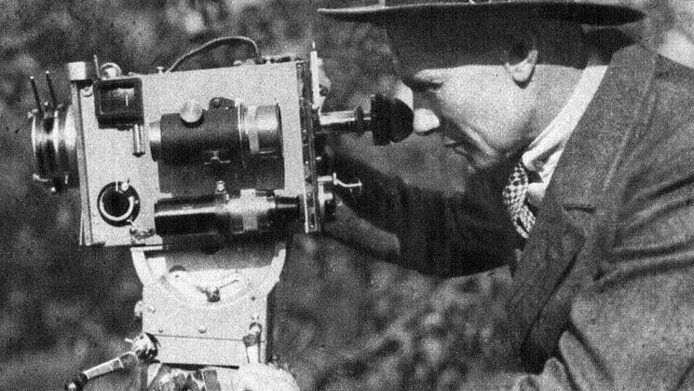Mapping Mr. Ross

The end of the Third Reich was also the end of Colin Ross. At the end of April 1945, the man who had enjoyed great popularity as a travel writer, filmmaker and lecturer during the 1920s and 30s committed suicide. With his demise, his work also vanished from the public eye. Colin Ross fell into oblivion. “When I was asked to join the project in 2013, I had never heard of him”; says Nico de Klerk, principal investigator of the FWF project Exploring the Interwar World. The Travelogues of Colin Ross, which was conducted in cooperation with the Ludwig Boltzmann Gesellschaft and the Austrian Film Museum. Born in Vienna in 1885, Ross quickly became a virtuoso in the use of modern media. Between 1910 and 1945 he was “remarkably successful, producing around 1,200 articles in newspapers and magazines, 35 books, six films and numerous (illustrated) lectures”, notes de Klerk. He was popular not only in German-speaking countries, but also internationally.
Multimedia
Ross was not the only one in the interwar period to intrigue European audiences with reports from faraway countries in word, moving pictures and sound. The business model he developed early on was both remarkable and unique. “Integrating multiple forms of interconnected media, his work was partially funded through contracts with newspapers and magazines”, explains de Klerk in the interview with scilog. His publisher F. A. Brockhaus positioned him as a family man, travelling with his wife and children, and as an authority in the field of geopolitics. The fact that his films were produced by the German UFA film production company added to his reputation. But that’s not all, Ross was also a perfectionist in handling the media. He used short clips from feature-length films for his lectures, paying close attention to the quality of the illustrations for his books and using exclusively photographs taken specifically for the purpose. “He was present in several different media types simultaneously for a long time, and that’s what I found interesting about him”, says de Klerk. This was ultimately the reason for starting the project.
From journalist to propagandist
Over time, the relationship between text and photographs in Ross’ books changed (the text was supplemented by several pictures displayed over several pages under one overarching title), as did his narrative perspective. Having started out by alternating between personal testimonials and distanced reporting, Ross increasingly turned to the use of a purely descriptive tone. But there was yet more to come, in 1933 he “converted” to National Socialism and in the subsequent years his narrative mode gave way to a more descriptive style of writing. The book Amerikas Schicksalsstunde (1935) marked his move from travel writer to propagandist. It constituted the most political report of his career, claiming that there was the chance of an agreement between Roosevelt und Hitler.
Unheeded
Ross spent one final spell in the USA from October 1938 until January 1939. In 1942 he published his derogatory assessment of the USA Die Westliche Hemisphäre. This was not only a description of the United States as an expansive power, but also a documentation of his own, geopolitical views – which, unfortunately for him, nobody in Berlin was interested in. The popular and useful Colin Ross never became a figure of political significance.
Personal details Nico de Klerk conducts research on film history and is also an archivist and curator. He acquired his PhD from the University of Utrecht in 2015 (Showing and telling: film heritage institutes and their performance of public accountability, Wilmington 2017). Most recently, de Klerk was the principal investigator in the FWF project Exploring the Interwar World. The travelogues of Colin Ross (1885–1945) at the Ludwig Boltzmann Institut für Geschichte und Gesellschaft in Vienna.
Project website: www.colinrossproject.net





